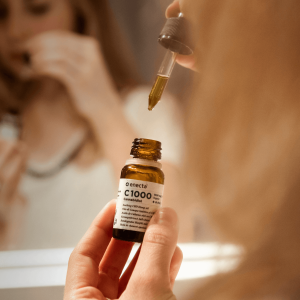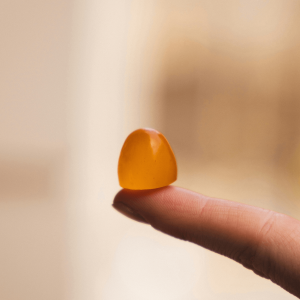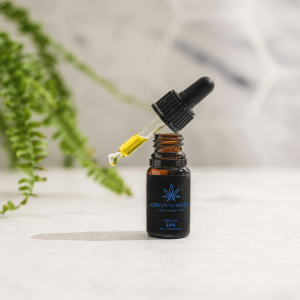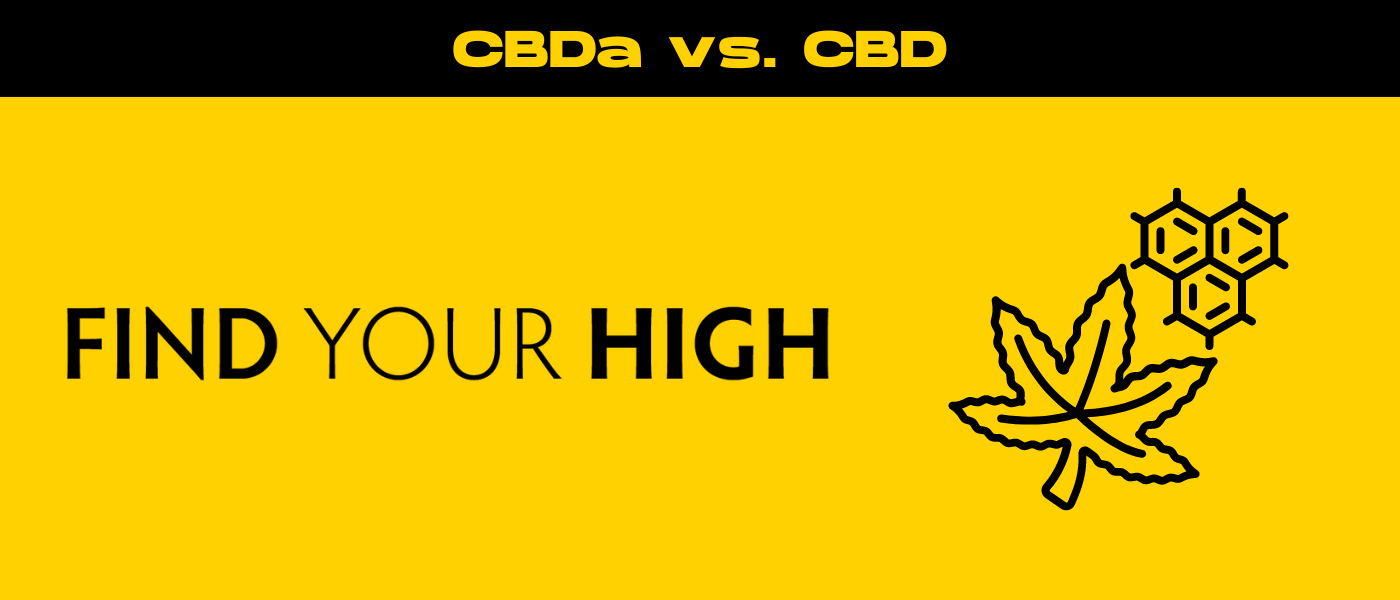Both CBDa vs CBD are natural compounds derived from the cannabis sativa plant, but they have some distinct differences that make each unique.
CBDa, or cannabidiolic acid, is found in the raw forms of the plant, while CBD, or cannabidiol, is produced when CBDa is exposed to heat through a process called decarboxylation. Understanding these differences is crucial for anyone looking to explore the benefits of cannabis, as each compound interacts with our body’s endocannabinoid system in its own way.
In this blog, we’ll dive into how both CBDa and CBD work, what potential health benefits they offer, and why some people might prefer one over the other. Whether you’re new to the world of weed or just looking to expand your knowledge, this guide will provide you with a clear and approachable understanding of these unique compounds.
What is CBD?
CBD, or cannabidiol, is a naturally occurring compound found in the cannabis plant. Its chemical structure comprises 21 carbon atoms, 30 hydrogen atoms, and 2 oxygen atoms (C21H30O2), forming a unique molecular composition that’s responsible for its distinct properties.
Historically, CBD has been utilized in various forms for thousands of years, with ancient civilizations using cannabis for a range of purposes from medicinal treatments to spiritual rituals. Fast forward to the modern era, CBD has gained widespread popularity for its potential health benefits.
It is commonly used to help manage conditions like anxiety, chronic pain, inflammation, and even epilepsy. This compound is appreciated for its therapeutic properties without producing the psychoactive effects associated with THC, another well-known cannabis component.
The Science Behind CBD
CBD interacts with our body’s endocannabinoid system (ECS), which plays a key role in maintaining homeostasis or internal balance. The ECS consists of cannabinoid receptors (CB1 and CB2) that are distributed throughout our central and peripheral nervous systems. When CBD is introduced, it doesn’t directly bind to these receptors but rather influences them in a way that enhances the body’s ability to utilize its own endocannabinoids more efficiently.
Multiple research studies have highlighted CBD’s potential benefits, including its anti-inflammatory, anti-anxiety, and neuroprotective effects. For instance, it has shown promise in alleviating symptoms of epilepsy in conditions like Dravet Syndrome.
Moreover, CBD’s potential effects extend to supporting mental health by reducing anxiety and improving sleep quality, thereby contributing to overall well-being.
What is CBDa?
CBDa, or cannabidiolic acid, is one of the two major cannabinoid precursor compounds and exists naturally in the raw forms of the cannabis plant. Its chemical structure is C22H30O4, slightly different from CBD, which allows it to have unique properties and effects.
Unlike CBD, which only forms after raw cannabis is heated (a process known as decarboxylation), CBDa is found in the unprocessed leaves and flowers of the plant.
Throughout history, raw cannabis preparations, which naturally contain CBDa, have been utilized for their potential health benefits. However, it wasn’t until recent years that researchers began to dive deeper into understanding what CBDa can offer compared to its more well-known counterpart, CBD.
The Science Behind CBDa
CBDa interacts with our body’s endocannabinoid system (ECS) in ways that are distinct from CBD. While CBD indirectly influences the ECS, CBDa has been found to inhibit an enzyme called cyclooxygenase-2 (COX-2), which is linked to inflammation. This action suggests that CBDa could have powerful anti-inflammatory properties.
Preliminary research has shown that CBDa might be effective in reducing nausea and vomiting, especially in cases of chemotherapy-induced nausea. More studies are needed, but early findings indicate that CBDa could offer a range of therapeutic benefits, from anti-inflammatory effects to potential cancer-fighting properties.
How CBDa is Made
The process of extracting CBDa from raw hemp plants starts with selecting high-quality hemp plants. These plants are harvested and kept in their raw form to preserve the CBDa content.
The extraction usually involves cold-pressing or soaking the plant material in solvents like ethanol. This ensures that the CBDa is maintained without converting it into CBD through the application of heat. It’s a delicate process that requires careful handling to retain the compound’s natural properties.
Now, while extracting CBD typically involves decarboxylation—heating the raw plant to transform CBDa into CBD—extracting CBDa skips this step entirely. By avoiding heat, CBDa is kept in its raw, acid form.
This difference in processing is crucial; while both methods aim to obtain beneficial cannabinoids, the resulting extracts have distinct chemical compositions and, consequently, different effects on the body.

Health Benefits of CBDa
Anti-nausea effects
One of the standout benefits of CBDa is its potential anti-nausea effects. Research suggests that CBDa may be even more effective than CBD in reducing nausea and vomiting, especially in cases related to chemotherapy treatment. This makes it a promising natural option for patients undergoing harsh treatments who seek relief from these uncomfortable side effects.
Potential anti-inflammatory benefits
CBDa also shows great promise in the realm of reducing inflammation. By inhibiting the enzyme COX-2, which is linked to inflammatory responses, CBDa could potentially be used to manage conditions characterized by chronic inflammation. This includes ailments like arthritis or inflammatory bowel disease. While more clinical trials are needed, early studies are hopeful.
Research on additional health benefits
As scientists continue to explore CBDa, additional health benefits are being uncovered. Preliminary studies reveal that CBDa shows promise in fighting cancer cells and reducing anxiety. Researchers are also investigating its impact on pain relief and neuroprotection. Each new finding adds to the growing body of evidence suggesting that CBDa could play a significant role in future therapeutic applications.
Potential Side Effects of CBDa
Like any compound, CBDa may cause some side effects. Here are some known side effects to be aware of:
- Drowsiness
- Dry mouth
- Lowered blood pressure
- Fatigue
- Changes in appetite
When comparing CBDa to CBD, it’s noticeable that the side effect profile is quite similar. Both compounds are generally well-tolerated, but individual responses can vary. While CBD is more studied and understood, CBDa is in the earlier stages of research. So far, reports suggest that the side effects of CBDa are relatively mild and resemble those of CBD, making it a potentially safer option with fewer unwanted impacts compared to other treatments.
In terms of safety and tolerability, CBDa appears to be a promising candidate. Early studies indicate that it has a good safety profile, with most users experiencing minimal side effects.
As with any supplement or new treatment, it’s always advisable to consult a healthcare provider before incorporating CBDa into your routine, especially if you are taking other medications or have underlying health conditions. Ongoing research will continue to shed light on the long-term safety and efficacy of this compound.
Health Benefits of CBD
- Pain relief: CBD is well-known for its potential to alleviate various types of pain, including chronic pain, neuropathic pain, and pain associated with conditions like arthritis. It acts on the body’s endocannabinoid system to reduce pain signals and inflammation, offering a natural alternative to traditional painkillers.
- Anxiety and stress management: Many users turn to CBD for its calming effects, which can help manage symptoms of anxiety and stress. It is believed to influence the brain’s serotonin receptors, contributing to a sense of relaxation and well-being without the psychoactive effects associated with THC.
- Anti-inflammatory properties: CBD has been found to exhibit strong anti-inflammatory properties. By interacting with the body’s immune system, it can help reduce inflammation and improve conditions such as rheumatoid arthritis and inflammatory bowel disease.
Potential Side Effects of CBD
Common side effects
- Dry mouth
- Drowsiness
- Light-headedness
- Changes in appetite
- Gastrointestinal issues
Long-term safety considerations
While current studies suggest that CBD is generally well-tolerated, its long-term safety is still a subject of ongoing research. Most cannabis users experience mild side effects, and there have been no reports of severe or life-threatening issues related to CBD usage.
Nonetheless, it’s essential to monitor your body’s response to prolonged CBD use and consult with a healthcare provider to ensure it remains a safe choice for you.
Interactions with medications
CBD can interact with certain medications, potentially altering their effects. It is known to influence the activity of liver enzymes responsible for metabolizing many drugs, which can either increase or decrease the effectiveness of those medications.
If you are taking prescription drugs or have underlying health conditions, consult your healthcare provider before starting CBD to avoid any adverse interactions.

Legal Status of CBD
Navigating the legal landscape of CBD can be a bit of a maze, as regulations vary widely between federal and state levels. In the United States, the 2018 Farm Bill federally legalized hemp-derived CBD, provided it contains less than 0.3% THC.
However, individual states have the authority to impose their own regulations, leading to a patchwork of laws that can be, at times, confusing for consumers and businesses alike. Some states have embraced CBD with open arms, offering a broad range of CBD products, while others have more restrictive statutes.
Globally, the legal status of CBD is equally diverse. Countries such as Canada and some EU nations have more lenient laws, allowing the sale and use of CBD, whereas other countries maintain stricter controls or outright bans.
The future of CBD legislation appears to be moving towards greater acceptance, with numerous countries reconsidering their regulations in response to growing scientific evidence and public demand. As research continues to demonstrate the therapeutic benefits of CBD, we could see a trend toward uniformity in laws, potentially leading to more standardized global regulations.

Market Trends for CBD
The CBD market has been experiencing exponential growth, with the global market size projected to reach several billion dollars in the coming years. This surge is driven by increasing public awareness and acceptance of CBD’s potential health benefits, along with the proliferation of various CBD-infused products. From tinctures and CBD oil to skincare and edibles, consumers are exploring a wide range of options to incorporate CBD into their wellness routines.
Popular products often include CBD oils, gummies, capsules, and topical creams, catering to diverse consumer preferences. The demographic for CBD users is broadening as well, with a mix of age groups, from millennials seeking natural wellness solutions to older adults looking for alternative pain relief methods.
This expanding consumer base reflects the versatility of CBD and its appeal across different lifestyles and needs. As the market continues to evolve, we can expect to see more innovative products and targeted marketing strategies aimed at making CBD accessible and appealing to even more segments of the population.
Legal Status of CBDa
The legal status of CBDa is currently in a bit of a grey area, much like it was initially for CBD. While CBDa is derived from the same hemp plant that produces CBD, it is not as widely recognized or regulated.
Under the 2018 Farm Bill in the United States mentioned above, hemp-derived products, including CBDa, are federally legal as long as they contain less than 0.3% THC. However, state laws vary, and some states have not yet carved out specific regulations for CBDa.
Compared to CBD, which has become more mainstream and better regulated, CBDa is still navigating through legislative uncertainties. The future outlook for CBDa is promising, though, as ongoing research and growing consumer interest are likely to prompt more comprehensive regulations, leading to clearer guidelines and greater acceptance.
Market Trends for CBDa
The market for CBDa is emerging as consumers become more educated about the distinct benefits of this compound. Currently, CBDa-infused products are starting to make their presence felt, with popular items including tinctures, capsules, and topical creams.
Unlike the broader CBD market, CBDa is often found in raw, unprocessed forms that preserve its natural properties. As awareness grows, there’s increasing consumer interest, particularly among those seeking alternative and complementary therapies for various health conditions. The rise in demand suggests that CBDa could soon follow in the footsteps of CBD, with market trends indicating a growing range of innovative products and a dedicated consumer base eager to explore potential CBDa benefits.
Comparing the Efficacy of CBDa vs CBD
When it comes to comparing the efficacy of CBD and CBDa, both scientific research and anecdotal evidence play crucial roles. Studies have shown that while CBD is well-known for its anti-inflammatory, analgesic, and anxiety-relieving properties, CBDa—the raw precursor to CBD—may offer distinct benefits, including stronger anti-inflammatory effects and potential anti-nausea properties.
Anecdotal evidence from users often highlights that CBDa offers quicker relief, particularly for conditions like anxiety and pain. Practically, this means that some might prefer CBDa in its raw form, such as in raw cannabis juice or minimally processed tinctures, while others might lean towards the more established CBD products for their daily wellness routines.
The growing body of research and user experiences suggest that integrating both compounds, depending on specific needs, could enhance overall therapeutic outcomes.

How to Choose Between CBDa vs CBD
Choosing between CBD and CBDa can seem overwhelming, but considering a few key factors can make the decision easier.
Firstly, think about your specific use case—CBD is widely known for its general wellness benefits, while CBDa may be more suitable for targeted relief due to its potent anti-inflammatory and anti-nausea properties.
Legality is another important factor; while both are federally legal in the U.S. under the 2018 Farm Bill, state laws can vary, so make sure to check the regulations in your area.
Personal preferences also play a significant role; some users might prefer the raw, unprocessed nature of CBDa, while others may find the broader availability and variety of CBD products more appealing. Consulting with healthcare providers can offer valuable insights tailored to your health needs.
Lastly, don’t underestimate the power of trial and error—sometimes the best way to determine which works best for you is by experimenting with both, starting with low doses and observing how your body responds.
Ways to Consume CBD
CBD can be enjoyed in various forms to suit different lifestyles and preferences. Tinctures and oils are popular for their versatility and ease of use; simply place a few drops under your tongue for quick absorption.
Edibles, such as gummies and chocolates, offer a fun and tasty way to incorporate CBD into your daily routine. CBD isolate gummies and hemp gummies, in particular, are excellent choices for those seeking a delicious treat with the added benefits of CBD and other beneficial compounds from the hemp plant.
For localized relief, topicals like creams and balms are fantastic options, as they can be applied directly to the skin where you need it most.
Ways to Consume CBDa
CBDa, in its raw and unprocessed form, offers some unique methods of consumption. One straightforward approach is raw hemp flower consumption, where you might add raw hemp leaves to your salads or smoothies.
Tinctures and CBDa oil made from unprocessed raw hemp extract are another effective way to get your CBDa fix, allowing for quick and easy use.
Supplements, such as capsules, offer a convenient option for those who prefer a no-fuss approach to their wellness routines, ensuring you get a consistent dose of CBDa acidic cannabinoids each time.

Conclusion
So, which is better for you: CBDa vs CBD? In summary, while both CBD and CBDa offer valuable health benefits, they differ in their properties and applications. CBD is well-regarded for its broad-spectrum wellness benefits, including anti-inflammatory, analgesic, and anxiety-relieving effects, making it a popular choice for daily use.
On the other hand, CBDa, in its raw and unprocessed form, tends to have stronger anti-inflammatory and anti-nausea properties, potentially offering faster relief for targeted issues.
Personal preferences play a crucial role when choosing between these compounds—some may prefer the familiarity and availability of CBD products, whereas others might opt for the natural, raw qualities of CBDa. Consulting with healthcare providers can provide tailored advice to match your specific health needs.
So, in the argument of CBDa vs CBD — both are great. Ultimately, experimenting with both CBD and CBDa in low doses can help you identify which works best for you, enhancing your overall wellness journey.
CBDa vs CBD: Frequently Asked Questions
1. Is CBDa more effective than CBD?
The effectiveness of CBDa vs CBD largely depends on what you’re using it for. CBDa is known for its potent anti-inflammatory and anti-nausea properties, which might make it more effective for acute issues in those areas. On the other hand, CBD is widely recognized for its overall wellness benefits, including relief from anxiety, pain, and inflammation. Both compounds have unique strengths, so the best choice will depend on your specific needs and responses.
2. What does CBDa do to the body?
CBDa interacts with the body by influencing the endocannabinoid system and other receptor pathways, such as serotonin receptors, which play a role in mood, anxiety, and nausea regulation. Due to its chemical structure, CBDa exhibits strong anti-inflammatory effects and may inhibit the COX-2 enzyme, which is associated with inflammation. This makes it particularly effective for managing pain and inflammation.
3. What is CBDa best for?
CBDa is particularly effective for conditions that involve inflammation and nausea. Its strong anti-inflammatory properties make it ideal for use in pain management, especially for inflammatory conditions like arthritis. Additionally, CBDa’s ability to reduce nausea can be beneficial for those undergoing treatments that cause gastrointestinal discomfort, such as chemotherapy.
4. Which is better for sleep, CBDa vs CBD?
When it comes to improving sleep, CBD tends to be the preferred choice overall. CBD is well-documented for its anxiety-relieving and calming properties, which can promote better sleep quality. While there isn’t as much research on CBDa specifically for sleep, its strong anti-inflammatory effects might indirectly contribute to better sleep by alleviating conditions that cause discomfort or pain during the night. However, individual responses can vary, so it might be worth trying both to see which works better for you.

 Rewards
Rewards




